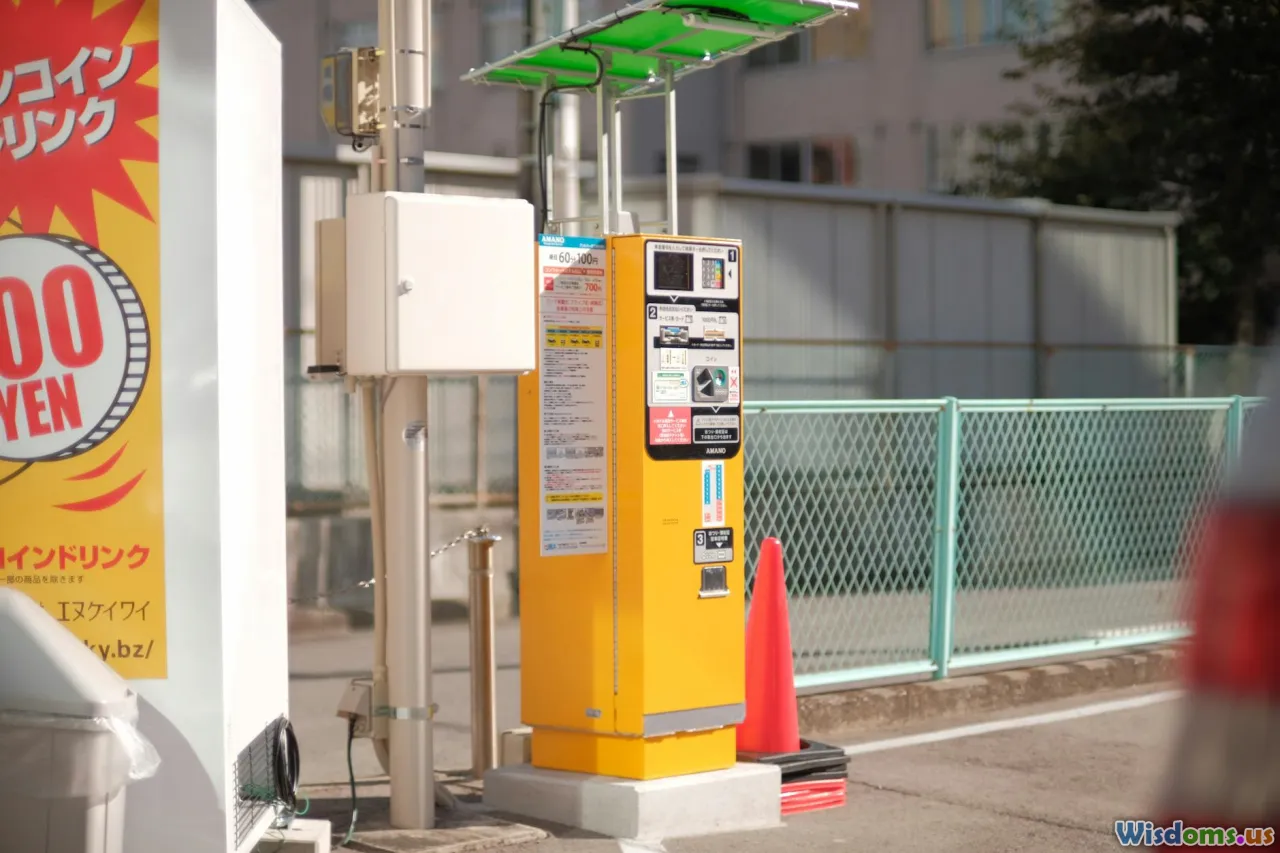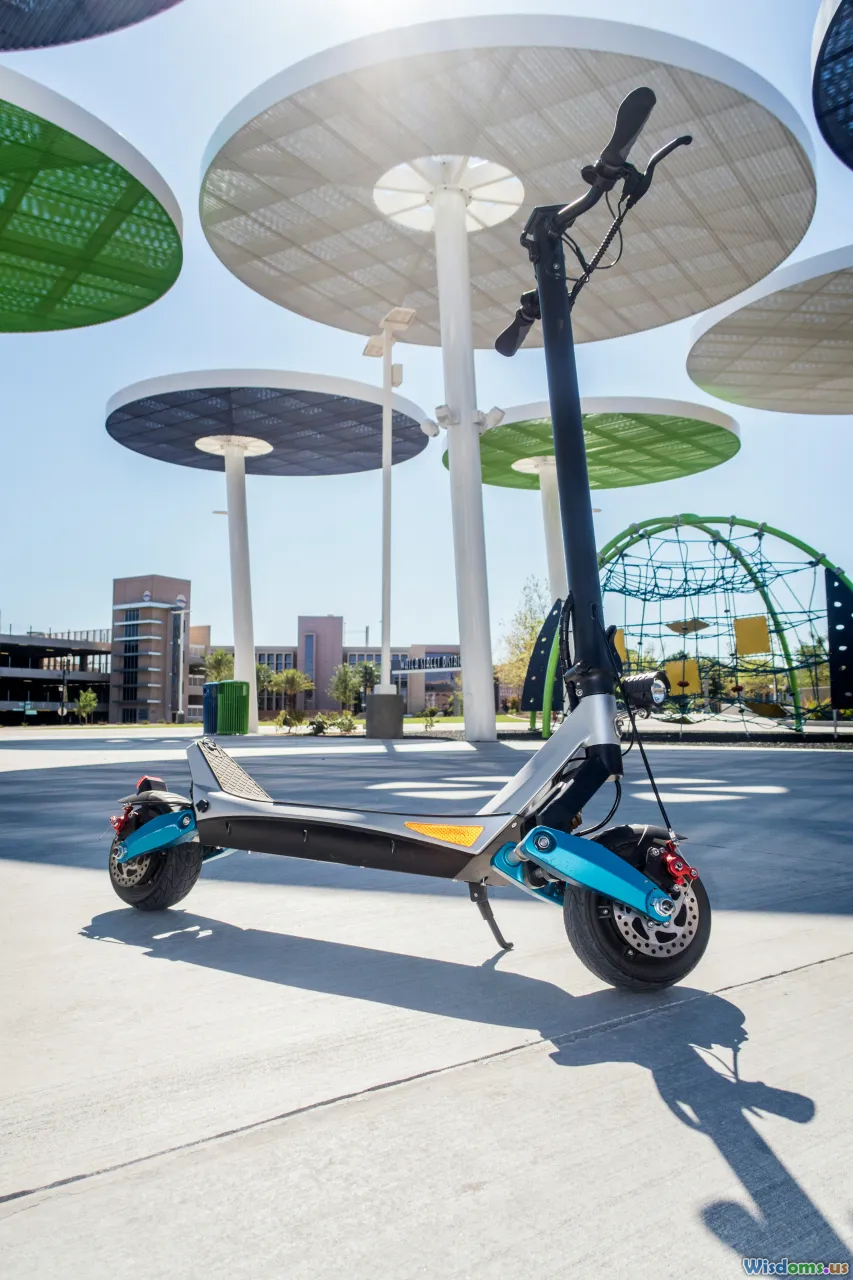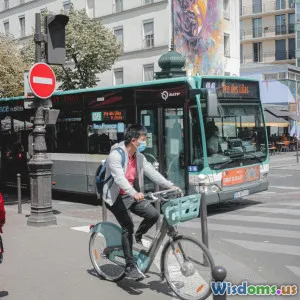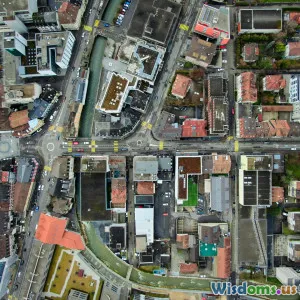
Future Proofing Cities With Autonomous Vehicle Corridors
14 min read Exploring how dedicated autonomous vehicle corridors can reshape urban mobility and ensure cities stay adaptable for future transportation innovations. (0 Reviews)
Future Proofing Cities With Autonomous Vehicle Corridors
As cities worldwide stretch the limits of their infrastructure in response to booming populations and technological innovation, a new urban movement is gathering speed: autonomous vehicle (AV) corridors. No longer just a vision in glossy renderings, these dedicated lanes and zones for self-driving cars present a practical strategy for sustainable urban transformation—if built right from the start. Let's journey through how AV corridors stand poised to redefine urban mobility, improve safety, and catalyze future-ready cities.
Reimagining Urban Mobility With AV Corridors

Historically, city transport infrastructures were engineered with manual vehicles and human error in mind. As city populations balloon and congestion escalates, innovations in transportation technology are increasingly rare lifeboats. Autonomous Vehicle corridors—dedicated passways for self-driving shuttles, buses, and delivery vehicles—fundamentally reimagine how roadways are used and regulated.
For example, in Phoenix, Arizona, Waymo’s testing of self-driving taxis on specially designated streets has offered a blueprint for how mixed traffic can give way to AV-dedicated sections. Likewise, in Europe, Hamburg operates an AV corridor stretching over 9km, facilitating seamless, low-emission public transit shuttles integrating with wider smart city systems.
The benefits? When AVs are separated from manually operated cars, cities gain predictability, fewer collisions, and higher transit throughput. Thus, AV corridors aren’t just another tech experiment— they’re strategic, incremental steps toward functional autonomy at city scale.
Anatomy of an Effective AV Corridor

So what defines an optimal AV corridor? It’s more than grabbing a lane and painting it a new color. Corridors must blend physical, digital, and operational infrastructure. Here are some of the hallmarks:
1. Adaptive Physical Design
Wide, well-marked lanes accommodate AV sensor arrays and maneuvering. Barriers or elevated medians may separate AVs from traditional traffic—think Los Angeles’ dedicated busways or Dubai’s planned AV sidewalks for lightweight robo-shuttles. These designs improve safety and clarity for all road users.
2. Embedded Digital Infrastructure
The most successful corridors fuse the real and virtual. Embedded LiDAR, high-resolution cameras, road-embedded sensors, and V2X (vehicle-to-everything) communications update vehicle AI with signal timings, pedestrian locations, and real-time traffic. For instance, Singapore’s AV testbeds utilize roadside units sending critical data packets to shuttles, anticipating traffic light changes or detecting jaywalkers, well before a human could react.
3. Dynamic Management Systems
Continuous data feedback allows traffic systems to reroute AVs, prioritize emergency vehicles, or adjust speeds in response to weather or roadwork dynamically. This mirrors systems already deployed in smart highway pilots like Colorado’s I-70, where digital signage instructs AV convoys in real time.
By integrating these elements, cities ensure their investment in AV corridors is compatible with evolving vehicle standards and future mobility innovations.
Safety and Efficiency Gains: Why Corridors Outperform Mixed Traffic

Traffic safety is one of the strongest arguments for dedicated AV zones. Human driving error causes over 90% of accidents, according to the World Health Organization. Autonomous vehicles, with their 360-degree vision and split-second reaction times, offer markedly safer performance—but only if surrounding traffic is predictable.
In mixed-flow environments, sudden lane changes, distracted drivers, and ambiguous pedestrian crossings force AV systems to default to ultra-cautious behaviors, reducing speed and efficiency. Corridors, on the other hand, create controlled environments where:
- Vehicle behavior is uniform (no erratic lane merges or unpredictable stops)
- Pedestrian and cyclist crossings are strictly managed
- Sensor systems communicate over shared standards
Case in point: In Shanghai, an 8km AV corridor operating autonomous shuttle service between business parks eliminated major incidents over an entire year pilot. Commute times dropped by 25%, and the need for stop-and-go braking (a major cause of aggravation and air pollution) plummeted.
Tackling Urban Challenges: Sustainability and Inclusion

An effective AV corridor program does more than streamline commutes—it helps cities face sustainability and equity imperatives head-on.
Reducing Emissions and Congestion
Electric or hybrid AVs operating at steady, optimized speeds drastically cut emissions compared to idling, stop-start buses or rideshares. When AV corridors link major transit stations or hubs, they incentivize mode shift away from private car use. In the Netherlands, an AV route lining Utrecht’s bustling business district lowered private car demand by 19% in its first year.
Enhancing Accessibility
Cities like Berlin and San Jose are already piloting AV corridors not only for efficiency but equity. Automated, on-demand shuttles serve neighborhoods previously cut off from late-night or weekend transit, with amenities like wheel-chair ramps and audio wayfinding. AV corridors can be programmed for speed limits, curb cuts, and audio-visual instructions to ensure all urban residents—not only the tech-savvy—benefit.
Supporting First/Last Mile Connections
Traditional transit stumbles at the so-called ``first/last mile'' challenges—linking outlying bus or train stops to residential or retail destinations. AV corridors tailored to microtransit shuttles, e-bikes, or robotaxi fleets elegantly close this gap, ensuring smooth, reliable, and customizable rides right up to a business park, stadium, or senior housing complex.
Technical and Policy Hurdles: What’s Holding Back Progress?

Implementing AV corridors isn’t a matter of painting lines. Among the most formidable challenges:
Connectivity and Digital Equity
Seamless vehicle-to-infrastructure communication requires robust, citywide high-bandwidth networks (often 5G or fiber). Under-connected neighborhoods risk being sidelined. Solutions? Many pilot cities collaborate with telecom operators to subsidize high-speed expansion, or bake in universal Wi-Fi at curb level.
Regulatory Frameworks
Jurisdictions are racing to codify standards for AV testing—and liability in the event of a mishap or hacking. France’s 2022 Law on Mobility delineates how and where AVs can operate, while still leaving cities room for locally tailored solutions. Interagency task forces are vital, bridging public works, law enforcement, and public engagement specialists.
Data Privacy and Security
Frequent real-time location uploads can intersect awkwardly with local privacy laws. Cities testing AV corridors have pioneered robust anonymization protocols; for instance, Pittsburgh’s corridor pilot collects only batch, depersonalized usage statistics for performance improvement, balancing transparency with public trust.
Cost and Equity Concerns
Smart road upgrades and sensors aren’t cheap. But cities like Helsinki leverage public-private partnerships—requiring tech firms and automakers to fund corridor sensors in exchange for vital test data—to share costs and accelerate rollouts. Equity impact studies are increasingly baked into planning from the outset.
Case Studies: Urban Pioneers Making Corridors a Reality

Looking at current projects reveals what success looks like—and where pitfalls await.
Singapore’s Jurong Lake District
In a master-planned area, Singapore integrated AV corridors not as afterthoughts but as central infrastructure from the start. Routes prioritized schools, senior centers, and transport nodes; lighting, pedestrian crossings, and access ramps were constructed following universal design standards—making corridors safe for all users, robotic or human.
Detroit’s Michigan Avenue Corridor
Detroit, seeking to rebrand itself as an AV innovation capital, is investing $130 million in a 40-mile corridor linking research hubs and underserved neighborhoods. The project includes curbside sensors and continuous workforce retraining for displaced transit operators—a strong model for holistic adaptation.
China’s Xiangyang High-Tech Zone
Here, AV corridors orchestrate fleets of unmanned delivery vans, alongside shuttles linking business campuses to metro stations. The government’s hand-in-glove collaboration with LiDAR suppliers, urban planners, and mobility startups has allowed for rapid, iterative refinements to corridor design and use policies—minimizing both downtime and resident frustration.
How Cities Can Build the Blueprint for Corridor Success

While every city has unique geography and needs, several actionable steps can jumpstart the transition:
-
Engage Stakeholders Early: Pull transit riders, local businesses, disability advocates, and tech providers into the process from day one. Iterative "tactical urbanism" trials—using temporary barricades, signage, and pop-up AVs—can power rapid learning, offering flexibility to adjust before investing in costly permanent upgrades.
-
Design for Scalability and Flexibility: Demand street designs that permit reconfiguration as transportation patterns shift. Example: Seattle’s AV corridor pilot employed modular lane dividers and portable signals, able to expand or contract with daily or seasonal ridership needs.
-
Bake in Sustainability Mandates: Prioritize corridors that encourage shared, electric, or micro-mobility fleets over private AVs, incentivizing cleaner urban air and reduced road resource competition.
-
Focus on Public Communication and Transparency: Publish performance data, safety outcomes, and user stories in accessible formats to build support and demystify AV technology.
-
Champion Interoperability and Open Standards: Insist that hardware, vehicle firmware, and infrastructure speak common digital languages—preventing vendor lock-in and future-proofing investments against coming waves of mobility innovation.
The Evolving Urban Landscape: What Comes Next?

As AV corridors mature, their influence will only broaden. Imagine drone deliveries diving into curbside pods, autonomous buses negotiating with smart traffic lights in real time, or corridors flexibly assigned by algorithm to ease event congestion or disaster relief.
The push for future-proof cities isn’t about blindly adopting shiny tech—it's about weaving tomorrow’s mobility seamlessly and equitably into the civic fabric. Autonomous vehicle corridors, managed with long-term vision and community input, promise cities that are safer, cleaner, and ready for the unpredictable innovations just around the corner.
The journey is just beginning, but every lane dedicated and every corridor redesigned brings future-resilient cities closer to reality for everyone who calls them home.
Rate the Post
User Reviews
Popular Posts



















